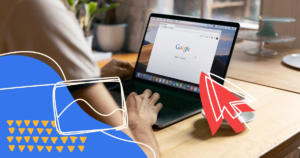Companies often ask people for feedback after they have made a purchase. And the broader the spending spectrum and the more fulfilling the person’s life, the more feedback he or she is required to give. Customer surveys after order delivery, cab rides, hotel visits, flights, etc should not be treated as something that an intern can do in 5 minutes. Collecting feedback should be a full-fledged part of your product. And, as with a product, there are a lot of details in a customer satisfaction survey. You should consider details to get real value out of customer surveys and not turn them into just another troublemaker for the customers.
Feedback Customer Journey
There are many approaches to customer surveys, for example, a little customer journey, or a growth funnel dividing the whole process into stages. So, the customer:
- Receives an invitation to the survey
- Reads the invitation
- Navigates to the survey
- Answers questions
- Completes survey
- Gets an answer from the company
- Continues to shop/use the service
Let’s look at each stage, discuss the pitfalls and how to avoid them.
1. Receiving a Survey Invitation
The customer doesn’t get messages
Make sure everything is working correctly especially if you’re using email newsletter service as the delivery channel for your surveys. Make sure your messages are at least delivered and not blocked by email systems or sent to spam by default.
Quality assessment too soon
It doesn’t make sense to send out a quality assessment survey right after purchase if it takes time to evaluate your product. Then you’ll only collect a fraction of the feedback you could have collected.
Quality assessment too late
There are also cases where the client received the survey too late after the transaction. This often happens when surveys are not tied to a transaction but are conducted regularly. In that case, the customer has time to forget a significant portion of the details that could help you improve your service.
Survey not on time
If your automated survey is sent out with a delay, make sure that the mailing doesn’t happen at an inconvenient time (especially if you operate in multiple time zones). If a customer receives a call to leave feedback too early in the morning or at night, the person is more likely to use Facebook or read the news than to take your survey. On the other hand, taking a survey at lunchtime or when the workday is over may increase the likelihood that you’ll get feedback. Of course, the timing of the survey depends on what your target audience is and what their lifestyles are – these 2 examples illustrate only. For an easy yes or no answer, survey pop ups can work best for you.
The client is not prepared for the interview in advance
Of course, it’s not a great mistake. But additional work on the customer journey before they’ve even received an invitation to the survey can affect the conversion rate.
2. Familiarity With the Invitation
No transaction details
If your business involves frequent transactions (cab ride) and feedback is not collected instantly, the customer may not understand which transaction is meant. So it’s good practice if you also add details to the survey invitation: “What did you think of your Wednesday morning ride with Gett?”
Template invitation
It’s important to understand that your client is receiving a lot of feedback requests from other companies, and using template phrases is probably not the best solution. The phrase “your opinion is very important to us” is now considered by many to be a mockery. Try to be creative with your invitations. Clients should feel that you care about them and what they have received from you is not just another automatic survey.Consider leveraging an online invitation maker to personalize the request for feedback or data. This can improve your response rate significantly.
Сall to action is unclear
When sending survey messages, make sure the call to action is visible to the customer from the beginning: put it in the header of the appropriate push notification or email. Make sure that when customers receive the message, they immediately understand what you’re asking them to do. Otherwise, they may simply ignore it.When it comes time for you to make your business proposal, know that the tone should be professional and clear. This will allow people in charge of decision-making understand what they’re being offered without any confusion or hesitation.
3. Switching to Survey
Too many actions before the survey start
If you’re collecting feedback, make the process as easy as possible to create a positive user experience for the customer to take no more than 1-3 clicks on the smartphone screen. If you say within the flight that “feedback can be left on the website” and the link to the feedback form is one of the least visible elements, there is no sense. If your business suggests giving feedback by entering a 16-digit code on the receipt after purchase, someone in your company is personally interested in keeping the customers` voice as quiet as possible.
Limited validity
Sometimes companies do wrong when stating the life of the survey. This is not recommended. If a customer is busy and doesn’t have time during the week, deciding to respond over the weekend and seeing that your survey is no longer active, there is a risk that he or she will no longer respond to your communication.
Terminal in an inconvenient location
If you’re using physical terminals to capture customer feedback (on the sales floor), it’s important to make sure the customer is comfortable completing the survey. Reebok stores are an example of this. In-store feedback terminals were located right at the checkout, and instead of the standard like/dislike, the survey collected the customer’s age, gender, and phone number.
It was even offered to leave extended feedback using the keyboard on the terminal screen, which is very inconvenient. If you do decide to put terminals on the sales floor, try to place them in more comfortable locations than directly at the cash register.
4. Going Through the Survey
Gathering contact information
Sometimes instead of personalizing the survey as much as possible for the client, employees decide to collect contact information that the client has already provided to the company. For their convenience. This practice makes life difficult for the customer.
Manual entry of responses
Finding out the reason for negativity in the survey is important. But if the qualifying question is free-form, many people will not fill it out. That’s why it’s a good idea to designate key factors as 1-click options and provide them with a free-entry field. Those who want to write will write. Those who do not have time to write will also share with you valuable insight.
All questions are mandatory
In the rush to collect as much information as possible from clients, you can also make answering all questions mandatory. In such a way you get into a situation where the clients won’t want to answer a particular question. And instead of skipping it, they’ll just close out your survey.
Too big survey
In an attempt to figure out all the details, some companies include too many questions in the survey, thereby boring the customer and reducing their loyalty. So try to keep the number of questions to a minimum.
Overly complex questions
Feedback questions should not make the customer think, wasting valuable time. If you ask questions like “what other situation have you used our product in?”, you should use another insights-gathering tool such as in-depth interviews.
5. Ending the Survey
Missing thank you page
If there is no thank you page, the client completing the survey may not understand what’s going on and think there’s been a glitch. Inexperienced specialists neglect this basic requirement.
Non-customizable thank you page
This point is much more common: both negative and positive responses have a “thank you for your feedback” page appearing in front of the customer who completed the survey. This implementation of the thank you page is better than no page but can look overly formulaic and robotic. It’s a good idea to tailor the thank you page to the customer’s responses, such as “We will take all measures to improve our service” in the case of the negative and “We will strive to make our service even better” in the case of the positive.
Thank you page is just for fun
Quite often the thank you page only thank the customer for the feedback. This does not take advantage of opportunities to get additional value from the survey. For example, you can offer to subscribe to your social networks, mailing list, show relevant specials, etc to those who evaluated you positively.
Thank you page helps to spread negativity
However, do not display within the thank you page links to social networks to those who rated you low. There is a risk that the client will follow the links and place their negative review in the public domain.
6. Receiving a Response From the Company
Lack of response to feedback
In some companies, feedback is mostly collected for numbers that are put on the CEO’s desk. By leaving a complaint and not getting a response, the customer will feel helpless and frustrated, and their loyalty to you will hit rock bottom.
Delayed response
If you’re collecting feedback, it’s important to allocate sufficient resources and to handle it competently with responsible employees and response targets at each customers` level. For instance, 60% of customers seek immediate response from brands. Taking too long to respond can cause you to lose a customer especially with negative experiences. Quick response and fixing the problem might have kept them.
Auto-reply with employee signature
If you are responding to negative feedback, there are 2 options: an automated response and a personal response from an employee. Of course, the choice of option depends on customer flow and your resources, but what you shouldn’t do is mix the two options into one and send a supposedly personal message from a manager/customer service/CEO in an automated mode.
However, if you choose to do so, leave the contact information of the person who “signed” it in the message. Choose an employee who has enough resources to communicate with customers, and make sure that the feedback process on the employee`s side works correctly.
7. Time After the Survey
Too frequent surveys
If you set up collecting feedback after every transaction (cab ride, store purchase), the customer may perceive this as pushy. So either run feedback requests selectively (not after every transaction) or make feedback collection as natively integrated into the product/service itself as possible.
Failure to comply with the unsubscribe policy
This is especially true if the feedback is collected via email. If a customer has opted out of receiving your messages, repeated attempts to collect feedback from them can not only piss them off but also affect the success of message delivery. Email platforms analyze the percentage of messages read, the percentage of messages marked as spam, and at some point may automatically start marking your messages as junk mail. So it’s best not to play with fire and comply with customer preferences.
What’s next?
In this article, we’ve broken down 25 mistakes that you hopefully won’t make when collecting feedback from customers. They’re all based on practical experience over the years. But there are many more such pitfalls, and together we could expand this material to 50 mistakes or even more.







